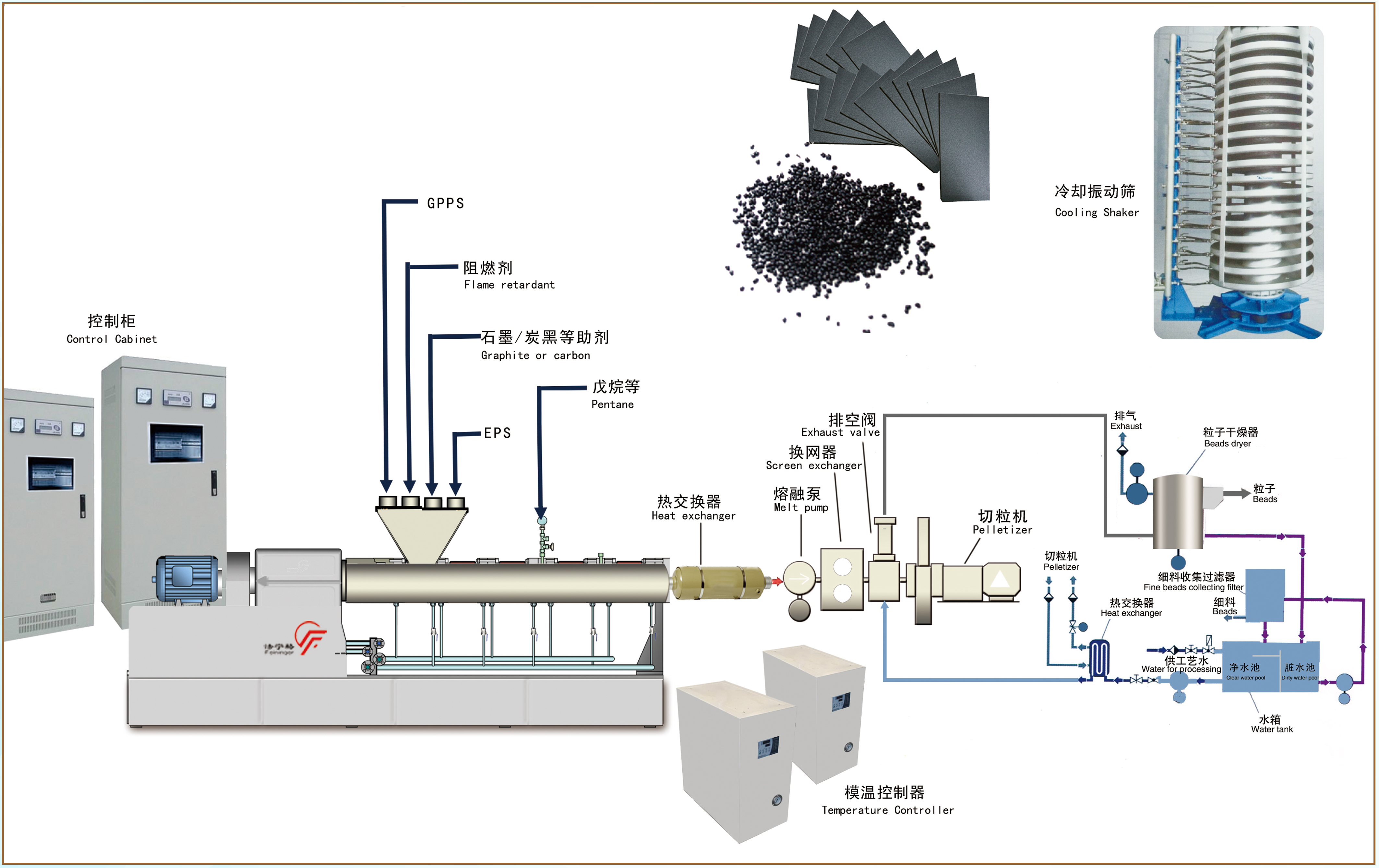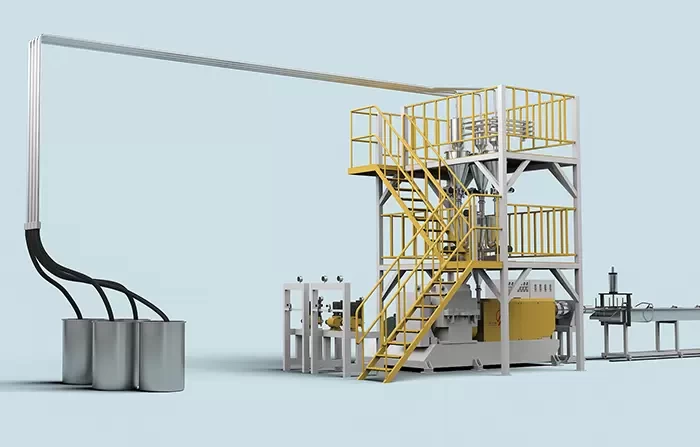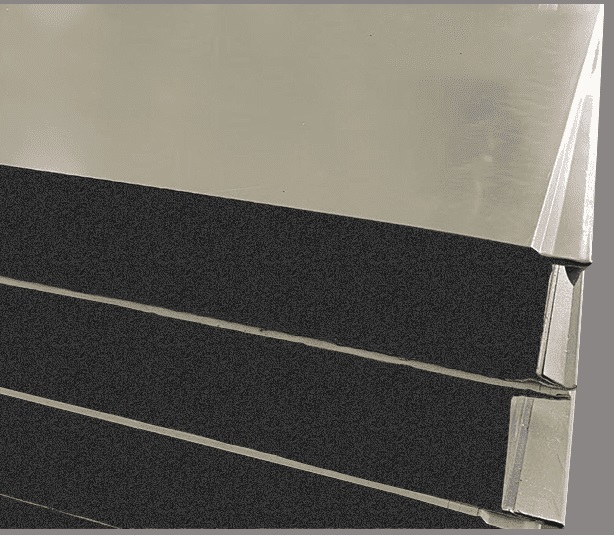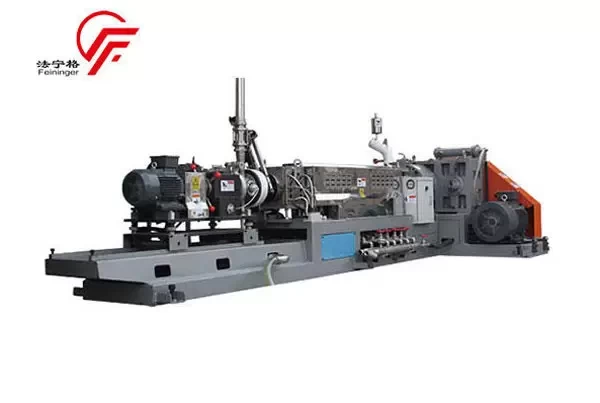Technology
26
Aug . 2025The process flow of producing graphite EPS (expandable polystyrene) by extrusion is to melt and mix polystyrene-based raw materials through extrusion equipment, then cut into the required particles through high-pressure underwater pelletizing, and finally carry out sieving, coating and packaging to obtain products. The specific steps are as follows:

1. Raw materials
Main raw materials: including polystyrene resin particles, flake graphite, thermal insulation enhancement), foaming agent (pentane, etc.), additives (antioxidants, lubricants, flame retardants, etc.).
2. Mixing and plasticizing
Put polystyrene resin, graphite, and other additives into the extruder in proportion. The temperature of the extruder is controlled at 180-200°C. The raw materials are sheared by the screw to form a uniform melt. After the melt enters the mixing section of the extruder, the liquid foaming agent pentane is injected into the melt through a metering pump, and is fully mixed and dissolved with the melt to form a homogeneous melt containing the foaming agent.
3. Melt filtration, temperature homogenization and transportation
The melt containing the foaming agent is pushed to the screen changer by the screw, and the tiny impurities in the melt are removed through the screen changer's filter. The filtered melt enters the melt heat exchanger, and through the precise temperature control of the mold temperature machine, the mixed melt is adjusted to the appropriate process temperature range. The homogenized mixed melt will be quantitatively transported to the high-pressure underwater pelletizer by the melt pump.
4. Pelleting and dehydration
The underwater pelletizer has a specially designed die head and cutter. The molten material passes through the small holes of the underwater pelletizing die and is cut into fine particles by the high-speed cutter. The high-pressure circulating water instantly cools and shapes the particles, and the foaming agent is also firmly locked inside the particles. The particles are transported by the water flow to the dehydrator section, where water and particles are separated by centrifugation.
5. Screening coating packaging
The particles are further dried and lifted in space through the elevator, and then enter the screening system to screen the required particle size. For the convenience of subsequent processing. The screened particles also need to be specially stirred and coated with a layer of lipid blend. Finally, it is sealed and packaged in a packaging bag with an inner bag.
Mobile Phonel: +86-13776668008
Email: market@feininger.cn
Website: http://www.xpsmachine.com/
Address: No.2 Zhonglin Road,TangshanIndustry Area,Nanjing City, JiangsuProvince,China
Latest News

 05 Sep 2024
05 Sep 2024 Streamlining Operations with the Latest XPS Cornice Production Line Innovations
In today's competitive manufacturing landscape, businesses are always seeking ways to streamline operations, reduce costs, and enhance productivity.
 10 Oct 2023
10 Oct 2023 Graphene polystyrene insulation sandwich panel (GPI)
Graphene polystyrene insulation sandwich panel (GPI) refers to a rigid foam with closed-cell structure formed by extrusion and foaming, with polystyrene resin or its copolymer as the main component, adding graphene and other additives.
 23 Jul 2024
23 Jul 2024 Exploring the Benefits of TPU Underwater Pelletizers in Polymer Processing
In the dynamic world of polymer processing, efficiency and quality are paramount. Thermoplastic polyurethane (TPU) underwater pelletizers have emerged as essential tools in this industry, offering numerous advantages that enhance both production and product performance.